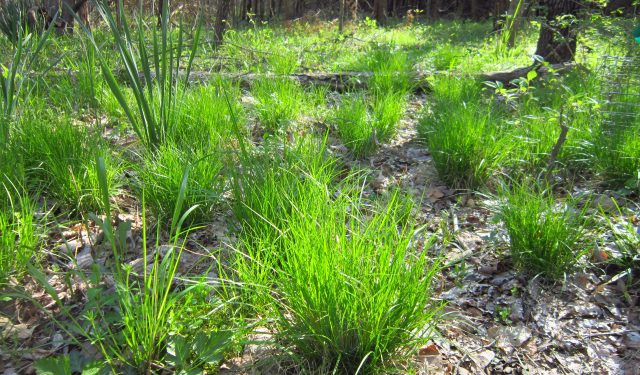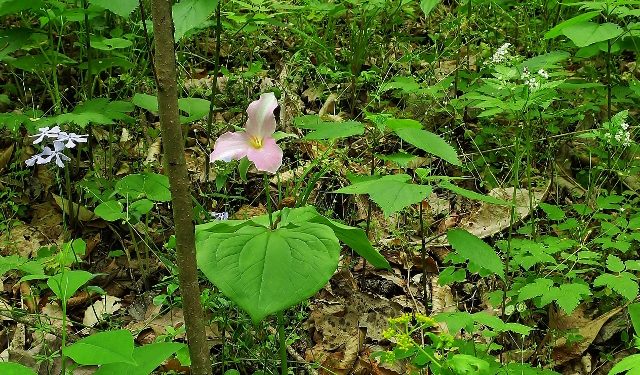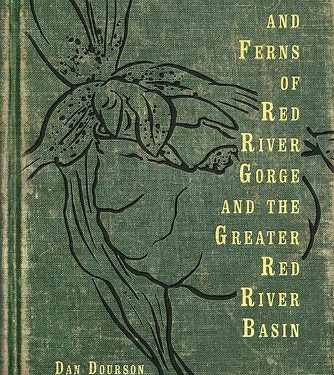Eastern Kentucky University is offering several summer field courses in biology.
Author: Jeff Nelson

Sedge Workshop
Sedge Identification and Diversity
(Carex, Cyperaceae)Many of the grass-like plants one may encounter in our natural areas in Kentucky are not actually grasses. Although similar, they are members of an entirely different family of plants; the sedge family (Cyperaceae)
Instructor: Rob Naczi*
When: May 21-22, 2019 (Tuesday/Wednesday)
Time: 9am-5pm Eastern Time
Where: Richmond area, Eastern Kentucky University and nearby natural areas, exact details TBA
Cost: $75THIS WORKSHOP HAS FINISHED
Many of the grass-like plants one may encounter in our natural areas in Kentucky are not actually grasses. Although similar, they are members of an entirely different family of plants. This workshop will focus on the largest genus within the sedge family (Cyperaceae), the genus Carex. With close to 150 species in this genus found in Kentucky, the diversity of sedges (Carex) is astounding and they can tell us a lot about the natural communities upon which they are found. Rob Naczi, curator of the New York Botanical garden and North America’s Carex expert, will teach us about sedge diversity and how to identify this notoriously difficult group.
*About the Instructor
Robert F. C. Naczi, PhD
Arthur J. Cronquist Curator of North American Botany, The New York Botanical Garden
http://www.nybg.org/science/scientist_profile.php?id_scientist=105
http://sweetgum.nybg.org/northeastflora/index.php
rnaczi@nybg.or
Rob Naczi Robert Naczi is a plant systematist whose research focuses on the flora of North America, plant conservation, sedges (Cyperaceae), and Western Hemisphere Pitcher Plants (Sarraceniaceae). Naczi uses a multi-pronged approach in his research, utilizing field, herbarium, and laboratory methods. His fieldwork has given him first-hand knowledge of the plant life of much of North America. He and collaborators are writing a comprehensive account of the Northeast’s spontaneous plants, New Manual of Vascular Plants of Northeastern United States and Adjacent Canada. He is lead editor of Sedges: Uses, Diversity, and Systematics of the Cyperaceae (2008). Also, he co-authored Mistaken Identity? Invasive Plants and their Native Look-alikes: An identification guide for the Mid-Atlantic (2008). For 35 years, he has studied the taxonomy, phylogeny, and ecology of Carex. Carex is the largest genus of flowering plants in North America (500 species) and in most temperate regions of the world (2000 species total). Naczi earned the B.S. in Biology from St. Joseph’s University, Philadelphia, and the Ph.D. in Botany from University of Michigan.

Wildflower Weekend 2019
When: April 12, 2019, 1PM to 8PM & April 13, 2019, 9AM to 9PM
Where: Natural Bridge State Resort Park, Slade, Powell Co., KY
Cost: $10 for adults, $3 for ages 12-17, free for ages 12 & underJoin us as we explore Natural Bridge State Park and the Red River Gorge in search of spring wildflowers with some of the best botanists in the state. Event will include wildflower hikes on Friday and Saturday, and a Friday night social with a short membership meeting and the opportunity to meet other KNPS members. Saturday evening will include educational talks, a book-signing, live music by the Forest Fiddleheads, and a panel discussion on recreational uses and impacts of the RRG and how they play a role in conservation. Door prizes and raffles will be included in Saturday evening festivities, including a wood carving by Bob VanHoff, as well as plants donated by KY Division of Forestry and UK Arboretum. Book-signing by Dan and Judy Dourson, authors of the new book Wildflowers and Ferns of Red River Gorge and the Greater Red River Basin.
Discounted KNPS memberships, $10 for paid registrants.
Registration on site prior to hikes and programs. Hikes start at Natural Bridge Lodge, programs are in Woodland Activities Center.
Book Sale
Book Sale!
Wildflowers and Ferns of Red River Gorge and the Greater Red River Basin
by Dan Dourson and Judy Dourson
The Dourson’s guide can now be purchased at a 50% pre-order discount through Christmas and a 30% discount after that. The books will not ship until February or March. Click on the title above to go to the publisher’s site to order.
Mary Carol Cooper (1942-2016)

Mary Carol Cooper
May 9, 1942 – May 17, 2016On May 17th, 2016, Kentucky lost one of its brightest and dearest conservation champions, Mary Carol Cooper. Mary Carol served KNPS for over 15 years in many different capacities, including director, Vice-president, field trip and hike leader, stewardship certification instructor, and newsletter contributor. In 2010, she retired as the director of Salato’s Native Plant Program, where she managed the greenhouses, propagated and cared for over 100 species of native plants, designed and installed native plant demonstration gardens, led workshops on developing backyard habitats, and inspired countless others to develop an interest in Kentucky’s plants and animals.
(more…)Dr. Thomas G. Barnes (1957-2014)

Dr. Thomas G. Barnes, 1957-‐2014
Tom Barnes passed away on October 12 after a long battle with illness. This is a great loss to the KNPS family and the conservation community of Kentucky as well as to his loved ones. Tom was not only a former KNPS president, but also a generous man who gave freely of his time and talents to this and many other conservation organizations. He regularly led field trips and gave presentation on biodiversity issues to groups of all types, from local garden clubs to the KNPS Wildflower Weekends. In many ways, Tom personified the KNPS; he was a respected academic whose invasive species management research influenced land managers in Kentucky and throughout the nation, including the graduate students he mentored, but his real passion was educating the general public about biodiversity issues. He truly loved nature for its beauty, as well as understanding its scientific importance. An accomplished photographer, his photographs appeared in books, websites, calendars, magazines, and other outlets all over the world, including at the Chicago Botanical Garden, the Audubon Aquarium, the Smithsonian and the Bronx Zoo—but he allowed groups like KNPS free access to his photos provided they were used to educate the public on biodiversity issues.
(more…)



